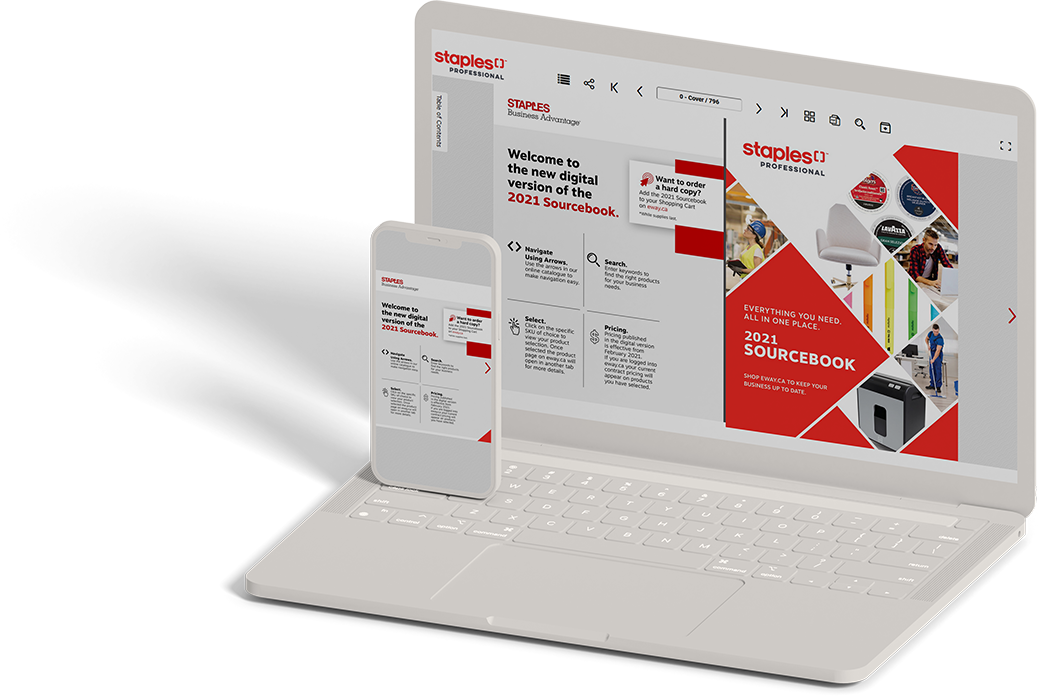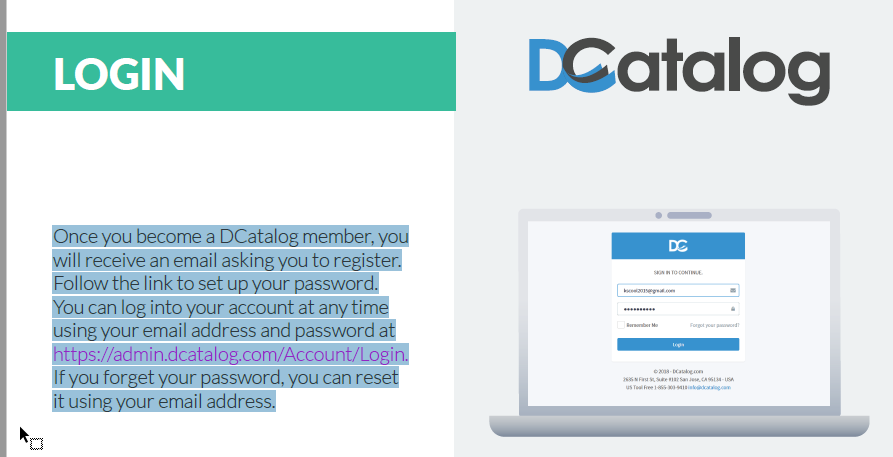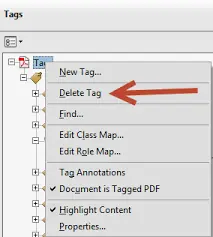
According to the CDC, 61 million Americans live with a disability. In younger adults, cognitive disability is more common. This means that many of your users and customers may have trouble accessing your content if you do not provide it in a more accessible manner. Since younger adults are more tuned into accessing content online, it is important to be prepared with accessibility standards. People with visual impairments are a primary concern, but those who suffer from a hearing or mobility disability may also be affected by content that is not accessible.
In recent history, the ADA (Americans with Disabilities Act) has taken strides to eliminate discrimination against people with disabilities and make sure they live more comfortably. Section 508 outlines the guide that implements an Accessibility Roadmap that states what accommodations should be made accessible to any people with disabilities.
The PDF file format is quite influential online for content that falls under the ADA and Section 508 laws and guidelines. Criteria for the accessibility of this format can be found under the Web Content Accessibility Guidelines (WCAG). Notwithstanding the laws and regulations, your content should be accessible for users and comply with all accessibility standards because it will have numerous benefits, such as expanding your reach.
Creating an accessibility-friendly PDF that meets all the ADA and WCAG requirements can be a daunting task. It will take time, a little research, and a good understanding of accessibility standards, but you can tackle this unique challenge and create better content. In this article, you will learn more about putting together an accessible and compliant PDF that follows ADA guidelines. Below are the topics covered, as well as a list of resources.
What is accessibility? Accessibility is when you make your digital publications usable for everyone – whether or not they have disabilities. Accessible documents are necessary so that everyone can understand the information presented. Here are some ways you can make your PDF accessible:
To start, structure your PDF so it clearly follows a logical format. Keep in mind that less is more; that’s why your PDF design should be aesthetically pleasing. Designing it this way means it can be correctly interpreted by a screen reader. Create an understandable flow by defining the reading order with bookmarks and identifying sections, paragraphs, and other important information. One way to increase information in an accessible way is by utilizing PDF tags. PDF tags allow the PDF to be resized and reflowed for different viewing sizes, as well as on mobile devices. Use the built-in accessibility features in your editing software. Most PDF creators, such as Adobe, will contain built-in accessibility features. Take advantage of these tools while creating and editing your PDF file. This will help ensure that your content is accessible and lessen the work on your end.
Going back to graphic design principles, less is more when it comes to designing an accessible-friendly PDF. Make sure the text in your document has a high contrast (black text on a white background or vice versa). Use easy-to-read fonts such as Arial or Comic Sans MS. Make these fonts large, at least size 14. Stay away from italics or all uppercase letters to highlight important information, but bolding the text is okay. Lastly, space the lines of text at least 25% of the point size to ensure readers can easily move their eyes from one line to the next.
Speech synthesizers and screen readers display and read text out loud on computer screens. When designing your PDF, make sure to set the language to whichever one the document is written in. Some screen readers can switch the speech synthesizer so that it correctly pronounces the content in different languages. Setting up a document title makes it easier for the reader to locate and identify which document he or she is reading.
When you design your PDF, make sure that the text is both selectable and searchable. Your readers need to be able to select and edit the text to manipulate it for accessibility. Avoid using scanned images that contain text. Scanned images with text inside the image cannot be read or extracted by screen readers or other assistive devices. A workaround to scanned images, if you must use them, is to use Optical Character Recognition (OCR) technology. This technology converts image-based text into selectable text that can be picked up by a screen reader.
It is important to convey clear information about the link destination within all the hyperlinks placed in your PDF file. Having clear information will help the reader understand where the link is headed without clicking on it. For example, you can have a tooltip that explains where the link goes, which will appear when the user hovers over it with the mouse. Screen readers read links and link titles in the order they are inserted within the paragraphs on the page.
Alternative text descriptions can be used for non-text elements, such as images, audio, and video clips. These elements should have a text alternative (called Alt-text/Alt-tag). Alt-text is a written description that communicates the content of an image symbol, or icon, as well as how it functions. This alt-text is for users who are visually or cognitively impaired. The screen reader will communicate the content of these images to the readers. Include transcripts with your video content. Users with visual or hearing impairments can read along and understand what the image conveys. Make sure transcripts note who is speaking and contain the dialog, as well as describe all descriptive information (non-speech related, like sound effects).
While you will find many accessibility tools at your disposal, the best tools to use to design an accessible PDF are Microsoft Word and Adobe Acrobat Pro. Microsoft Word works best for any PDFs that have a simple structure and contain minimal non-text elements. For any PDFs that are meant to be dynamic and engaging with media elements, Adobe Acrobat Pro is the only option to use to create a fully accessible and media-rich PDF.
There are many ways to increase PDF accessibility. Here is a quick rundown and examples of how to make a fully accessible file:
Screen readers must be able to recognize the text in order for the PDF to be accessible. The main content must be searchable and selectable, with no text in images, to optimize the accessible experience.

The content needs to follow a clear structure and should be organized logically and sensibly. This means that you need to outline the content by using bullet points for lists, headings, bookmarks, and a table of contents. This will make your PDF content easier to navigate.

You can use PDF Tags, a feature in Adobe Acrobat Pro, to mark both text and non-text elements. PDF Tags are crucial for assistive technologies, such as screen readers, to be able to access the content. When you create a PDF with tags, each tag associates what type of content it is and stores information about it. Tags will also form a “tag tree” which organizes the content into a logical reading order.
While it may seem like a small step, giving your content a descriptive title and specifying the language is hugely beneficial for making your PDF more accessible. Descriptive titles help readers understand what information is in the content they are about to read. Likewise, make links descriptive by using anchor text to let users know where the link is going. Label forms correctly and any form fields should have descriptive tooltips. Specifying languages helps screen readers transmit the text more precisely, so they can convey more accurate pronunciation rules and display accurate captions.
Alt-text is not visible on the page to the reader but is necessary for screen readers to pick it up and convey the image to the user. Adding alt-text will make your PDF content accessible. As for captions, these are visible to the reader. Make sure to provide transcriptions of audio and video clips.
Because the table layout can be complex, screen readers can have issues with recognizing the information presented. To make it more accessible, create a clear structure for the table such as adding headers to rows and columns, keeping the header labels simple (no layers), and containing each cell’s data to its row. Make sure to tag your table as well.
According to WCAG criteria – WCAG criteria 2.1 1.4.3. and 2.1 1.4.6 – which regulates content accessibility levels, the minimum contrast ratio is 4.5:1, with 7:1 as the most preferred. The recommended way to ensure that the contrast ratio meets the WCAG success criteria is to run it through a color contrast checker as you design the PDF file.
The recommendations talked about so far in this article have been for designing new PDFs. However, you may have some existing content that you would like to make more accessible and we have some suggestions on how to accomplish this as well.
It is important to remember that since the content was already designed, you may be limited in making it completely accessible, particularly if you do not have the source PDF. Below are the options available to you:
Taking these steps on an existing PDF will provide it with basic standards of accessibility, even though it might not be fully accessible.
As mentioned above, making your PDFs accessible can be a daunting task but it is important that your audience has the best experience with your content. Whatever purpose you use the PDFs for (internal documents or marketing materials), your content should be accessible on any device and arranged so it is easy to read. The suggestions in this article are the most popular ways to make your PDF accessible or improve on existing PDFs. If you get stuck or cannot remember all the steps, you can always find more detailed information in this blog post (which you can easily refer back to) or by checking our VPAT (Voluntary Product Assessment Template). The VPAT details each of the WCAG 2.1 requirements.
Here is the list of resources mentioned in the article. You can check and refer to these at any time as you work on your accessibility documents.